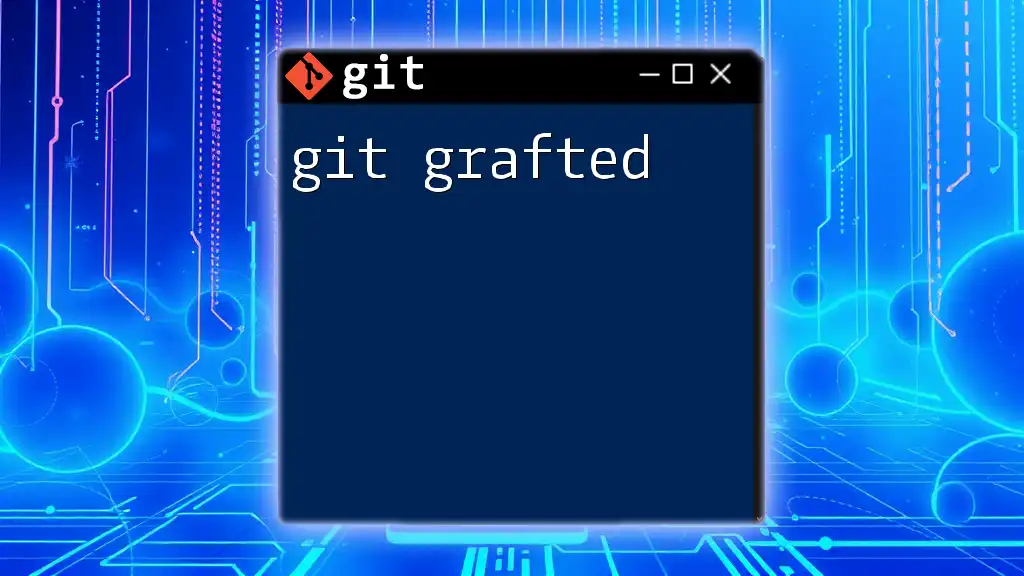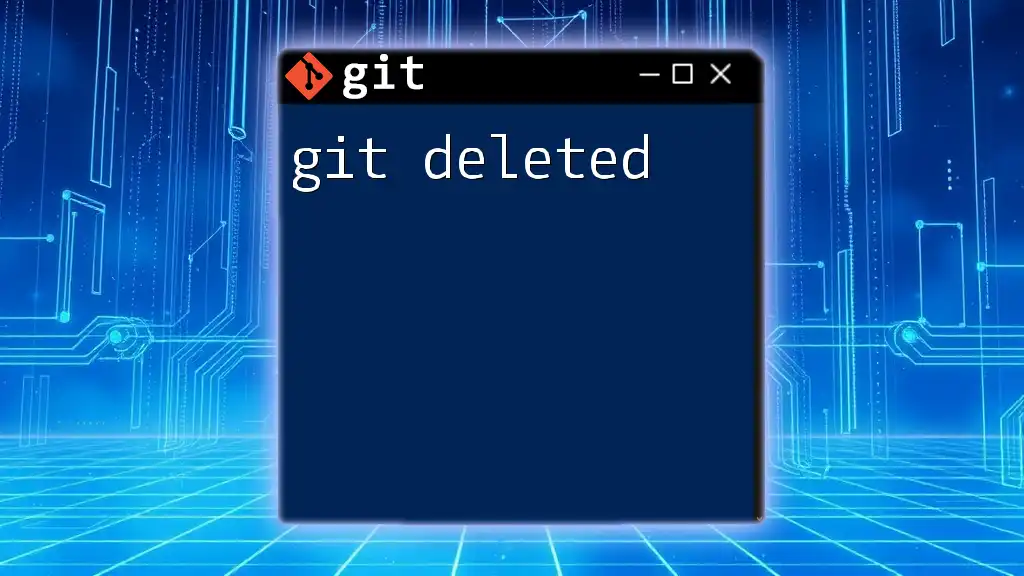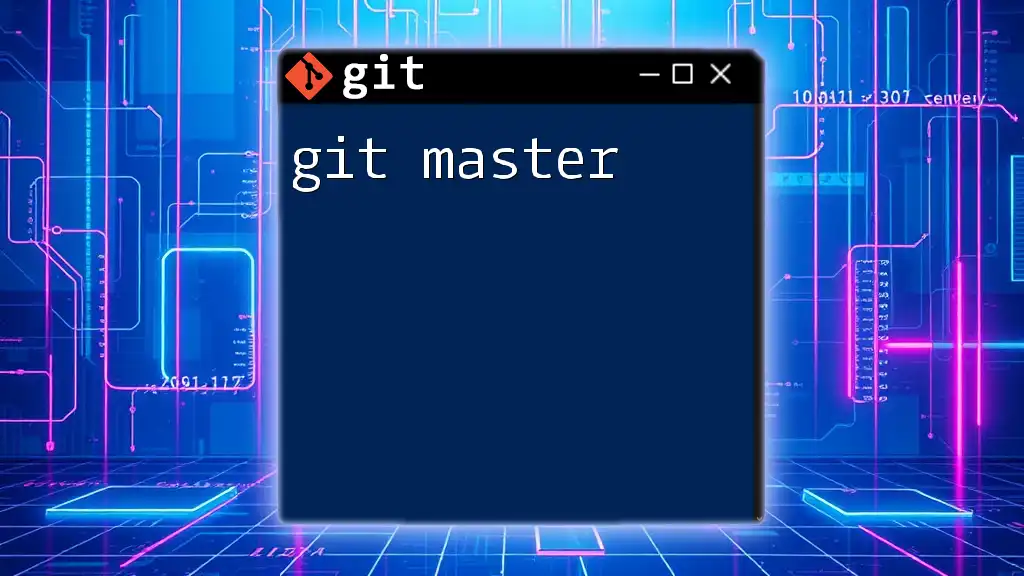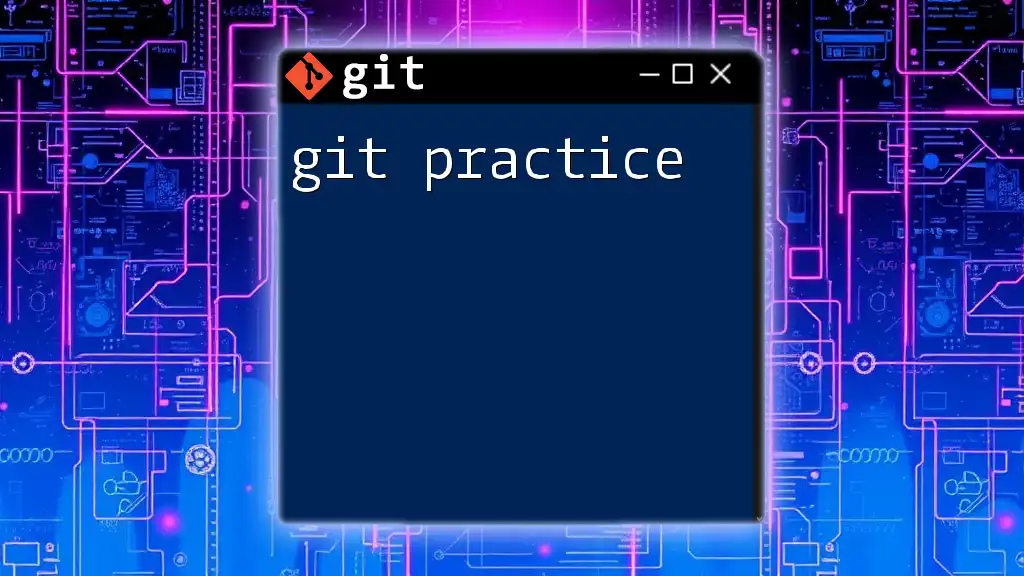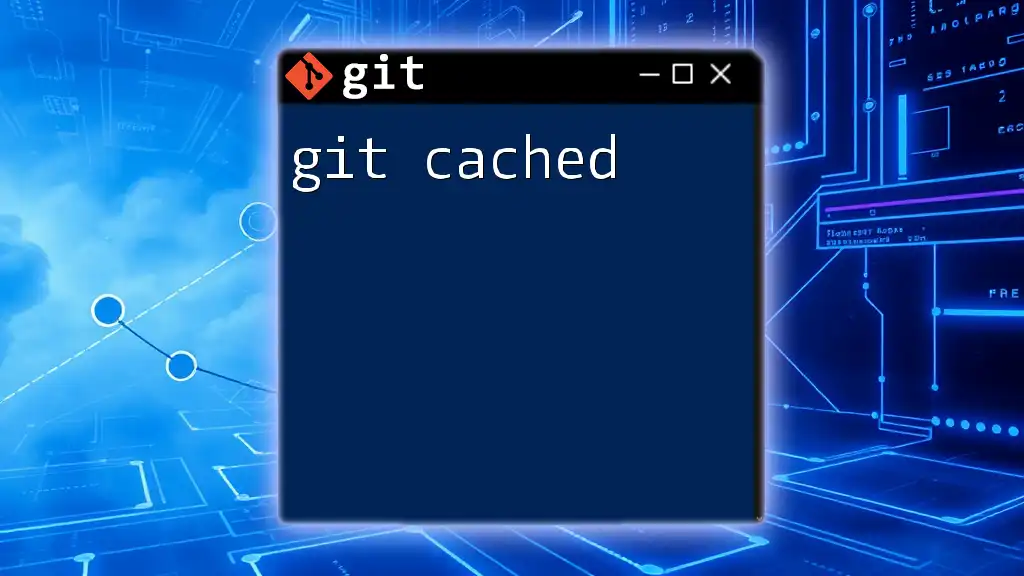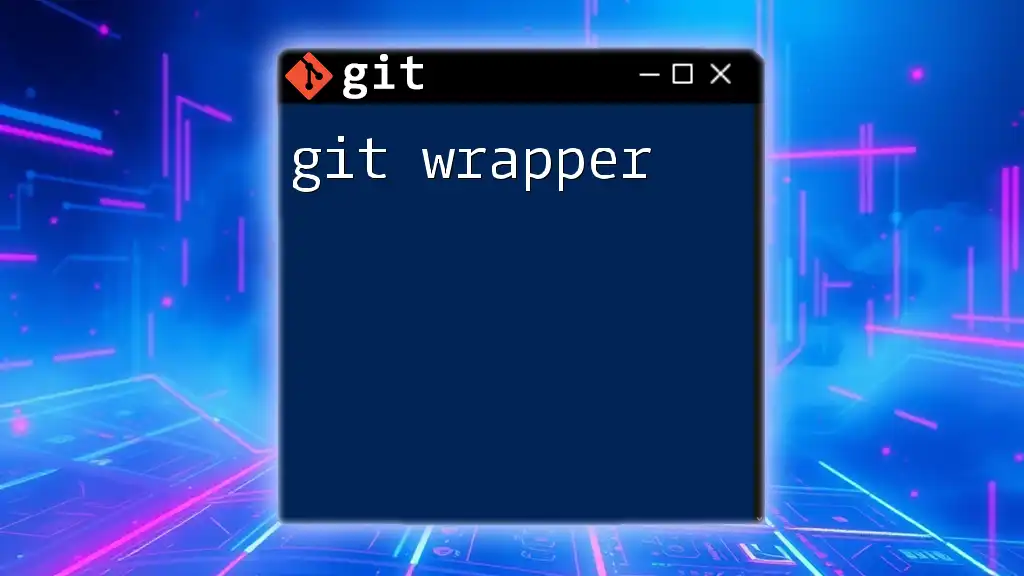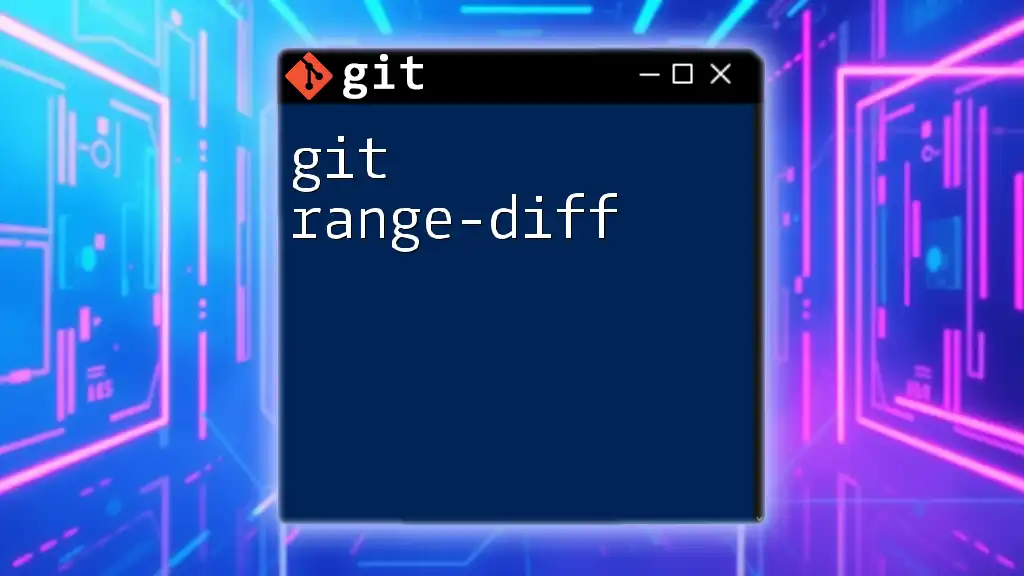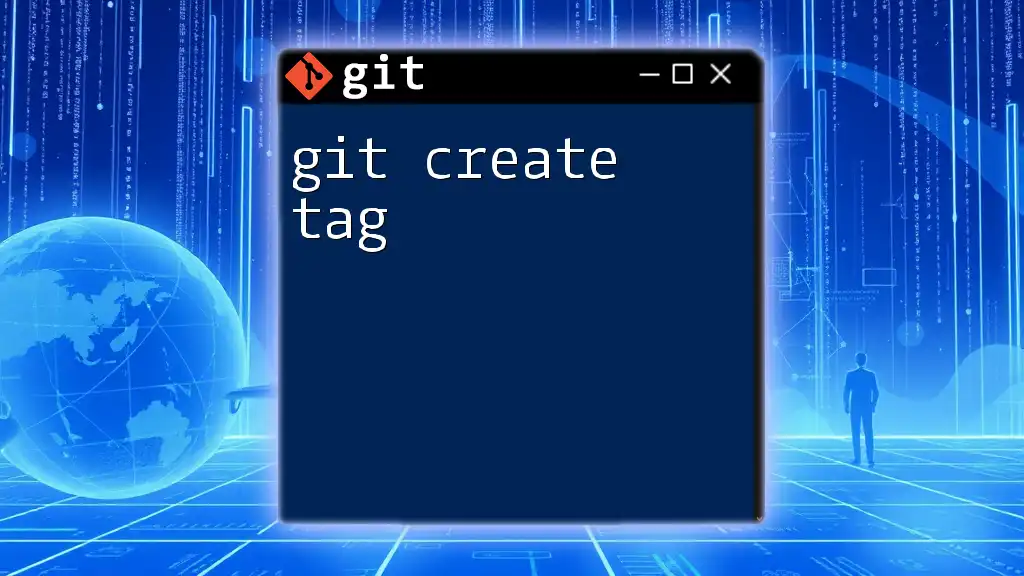In Git, "grafted" refers to manually specifying the parent commit of a commit, allowing you to create a new history that doesn't rely on existing parent commits.
Here's a code snippet demonstrating how to graft a commit:
git commit --graft <commit-hash>
Introduction to Git Grafting
What is Git Grafting?
Git grafting is a powerful feature in Git that allows you to manipulate the parentage of commits. This process essentially involves reattaching existing commits to a different parent commit, enabling developers to adjust their project's history to reflect changes, combine disparate parts of a project, or correct mistakes.
When to Use Git Grafting?
There are specific scenarios where grafting can be particularly beneficial. For instance, if you've developed features in different branches but need to maintain a coherent commit history, grafting lets you attach those branches to a common ancestor. Additionally, it's useful when recovering from a detached HEAD state, allowing further development without losing commit history. The advantage of grafting over methods like merging or rebasing is that it can simplify the history by creating a more linear narrative.
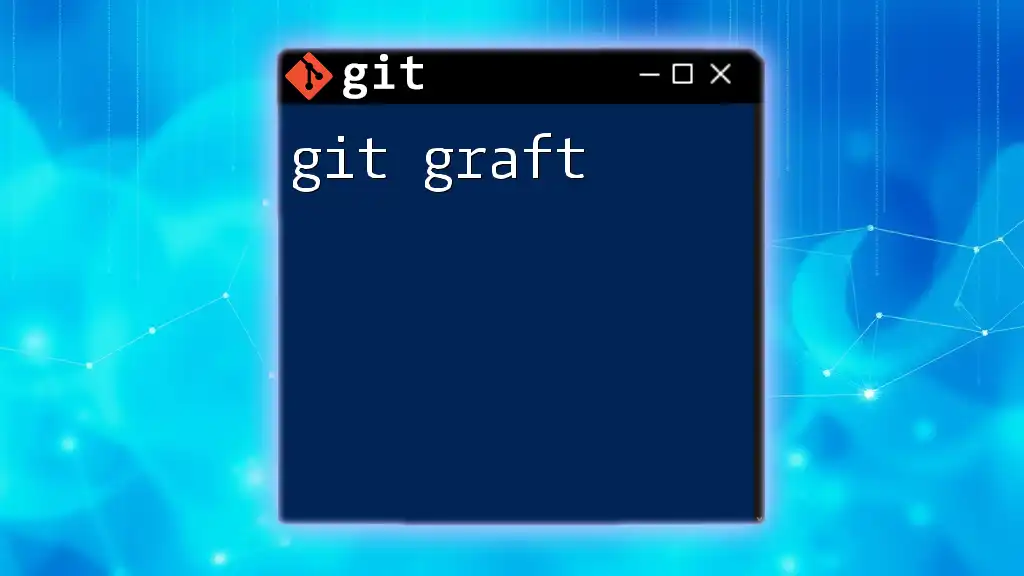
Understanding the Basics of Git Graft
How Git Grafting Works
At its core, Git grafting modifies how commits are related. Normally, each commit in Git has one or more parent commits. When you create a graft, you effectively change the parent of a commit using the `git graft` command. This rewiring can help in unifying disparate development efforts or resolving issues in commit history.
Key Terminology
- Parent Commits: The parent commit of a given commit is the commit that precedes it in the commit graph. Understanding how commits are linked is fundamental to effective use of grafting.
- Commit Graph: The commit graph is a directed acyclic graph structure, where each commit points back to its parent(s). This structure helps Git track the history of changes.
- Grafted Commits: These are commits that have undergone a modification in their parentage. A grafted commit retains its existing changes but is presented in Git as if it has a different lineage.
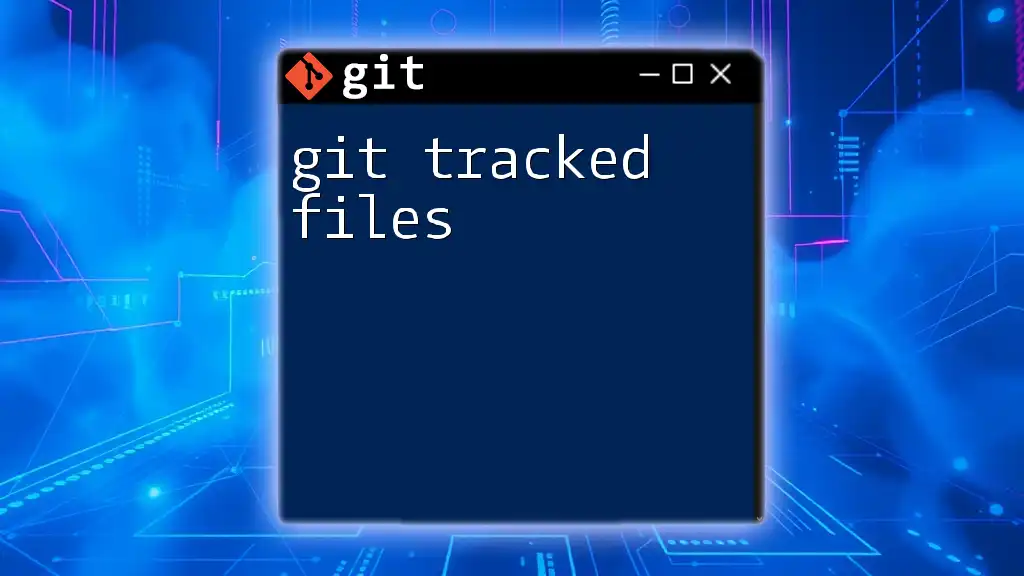
Step-by-Step Guide to Grafting
Preparing Your Repository
Before starting with grafting, you should have a repository ready for practice. You can clone an existing repository using the following command:
git clone <repository-url>
Creating and Identifying Branches
Understanding the existing branches and commit history is imperative before making any grafting modifications. Use the following commands to view existing branches:
git branch
To check the commit history, the command is:
git log --oneline
If you wish to create a new branch for your changes, do so with:
git checkout -b <new-branch-name>
Implementing Grafting
To perform a basic grafting operation, you will need to amend the commit you’d like to modify. The syntax for this is as follows:
git commit --amend --no-edit --graft <new-parent-commit>
Make sure you replace `<new-parent-commit>` with the actual commit hash you want to attach as the new parent.
Modifying and Removing Grafts
If you need to change an existing graft, use the same command you applied initially but reference the new parent commit:
git commit --amend --no-edit --graft=<new-parent-commit>
If you need to remove a graft, you can do so with:
git replace -r <commit-hash>
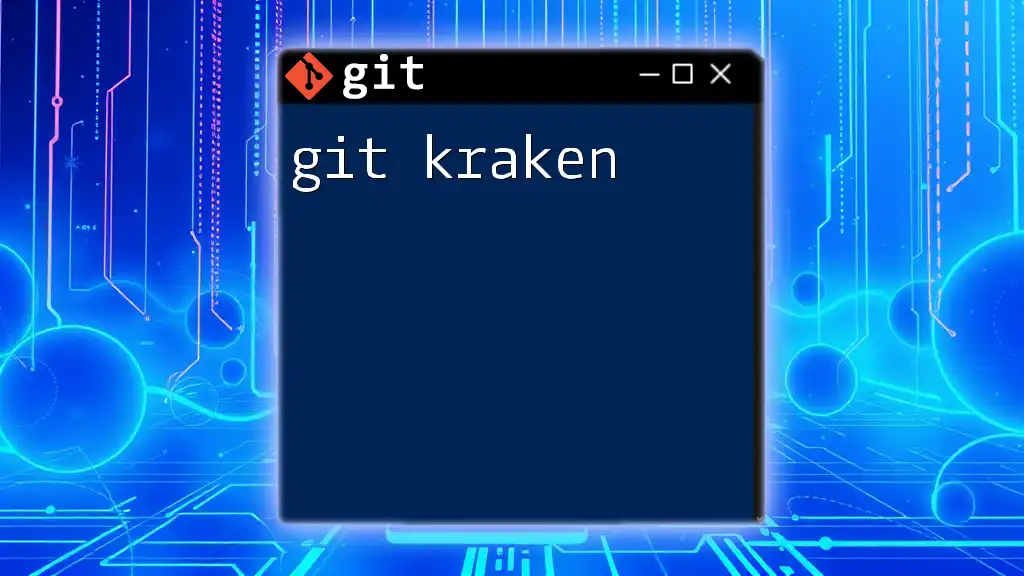
Practical Examples of Git Grafting
Example Scenario 1: Reattaching a Detached HEAD
If you find yourself in a detached HEAD state and need to attach it back to a new parent commit, you can execute the following commands:
git checkout --detach <commit-hash>
git commit --amend --graft=<new-parent-commit>
This sequence first checks out the detached HEAD state, and then it amends the commit to attach it to a specified parent.
Example Scenario 2: Combining Histories from Two Repositories
If you want to merge development histories from two separate repositories, grafting can be utilized effectively. You can use:
git graft <commit1> <commit2>
This allows you to blend two historical branches into one, providing a unified project history.
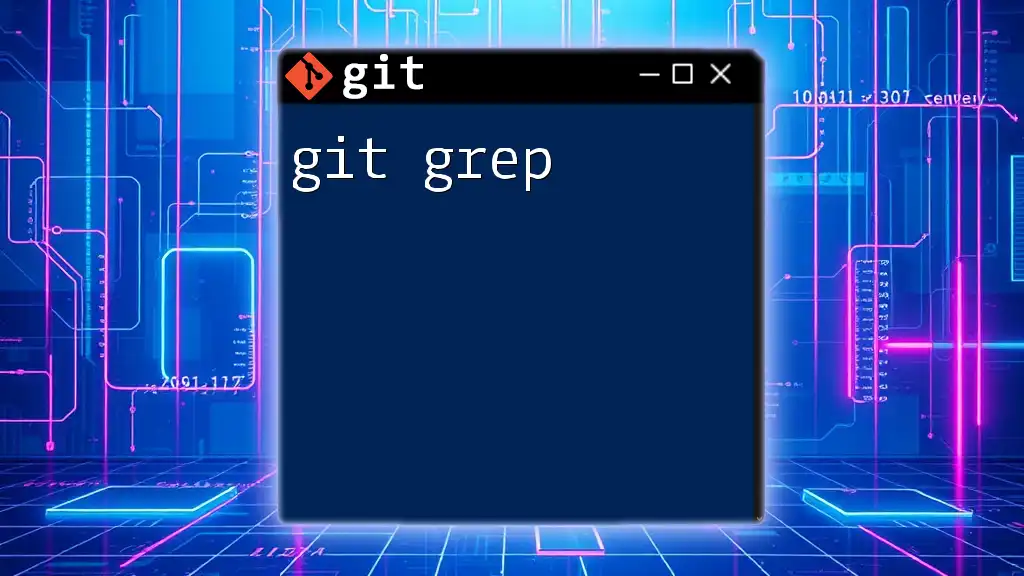
Advanced Concepts in Git Grafting
Understanding the Risks and Drawbacks
While git grafting can facilitate seamless integration of commits, it is essential to recognize the risks involved. Misuse of grafting can lead to a fragmented project history which can confuse collaborators, making it harder to track changes. It is crucial to maintain clarity in your commit history and document your changes properly.
When Not to Use Grafting
Extreme care should be taken when considering grafting. It is advisable to avoid grafting in collaborative environments where multiple team members work on the same branch, as this can introduce inconsistencies and misunderstandings regarding the commit history.
Comparing Graft with Other Git Features
When comparing grafting with alternatives like rebasing and merging, it’s essential to understand the unique benefits of each. Grafting offers fine control over commit parentage without altering the commit's content. In contrast, rebasing may rewrite history and reorder commits, which might not always be desired. Merging combines branches with distinct commit histories, preserving all commits but losing a linear narrative.
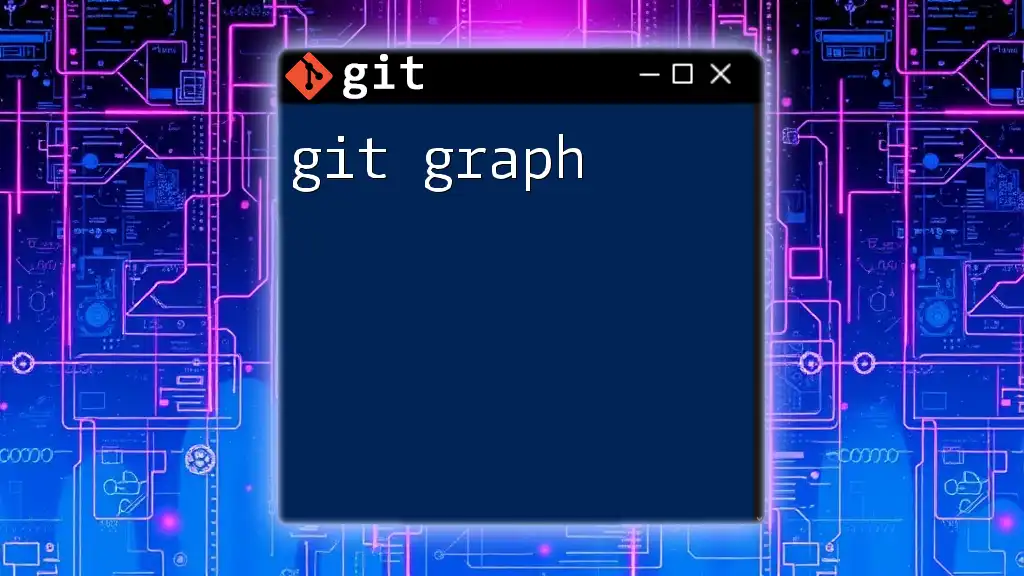
Maintaining Your Repository Post-Grafting
Checking Graft Status
After applying grafts, it is wise to verify which commits have altered parentage. You can view grafts currently in place with:
git fsck --full --no-reflogs
Reviewing Your Commit History
Analyzing the commit history post-grafting is crucial for maintaining a clear project narrative. You can visualize the commit structure using:
git log --graph --oneline

Conclusion
In summary, git grafting is a sophisticated and valuable tool in the Git arsenal, allowing developers to manipulate commit relationships effectively. By understanding when and how to utilize grafting, you can enhance project maintainability and history clarity. Experimenting with these concepts will deepen your comprehension and help you navigate complex version control scenarios with confidence.

Additional Resources
- Links to Official Git Documentation
- Recommended Git Tutorials
- Community Forums for Git Discussions
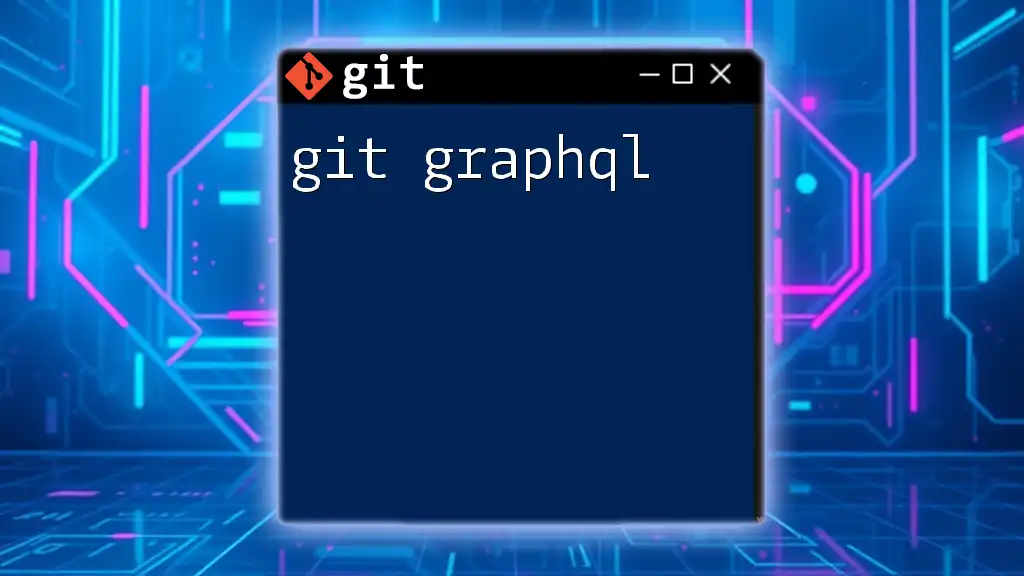
FAQs Related to Git Grafting
Common Questions and Answers
How does grafting affect collaborative workflows?
Grafting can complicate collaborative workflows if not communicated properly among team members. It's essential to ensure all team members are aware of the changes made to the commit history.
What happens to branches after grafting?
Branches remain intact, but the history may change based on the new parentage established through grafting. It’s important to check the history and ensure it aligns with your project's narrative.
By fostering a proper understanding of how to utilize git grafting, you can keep your project history more manageable and coherent, ultimately leading to more effective version control practices.

